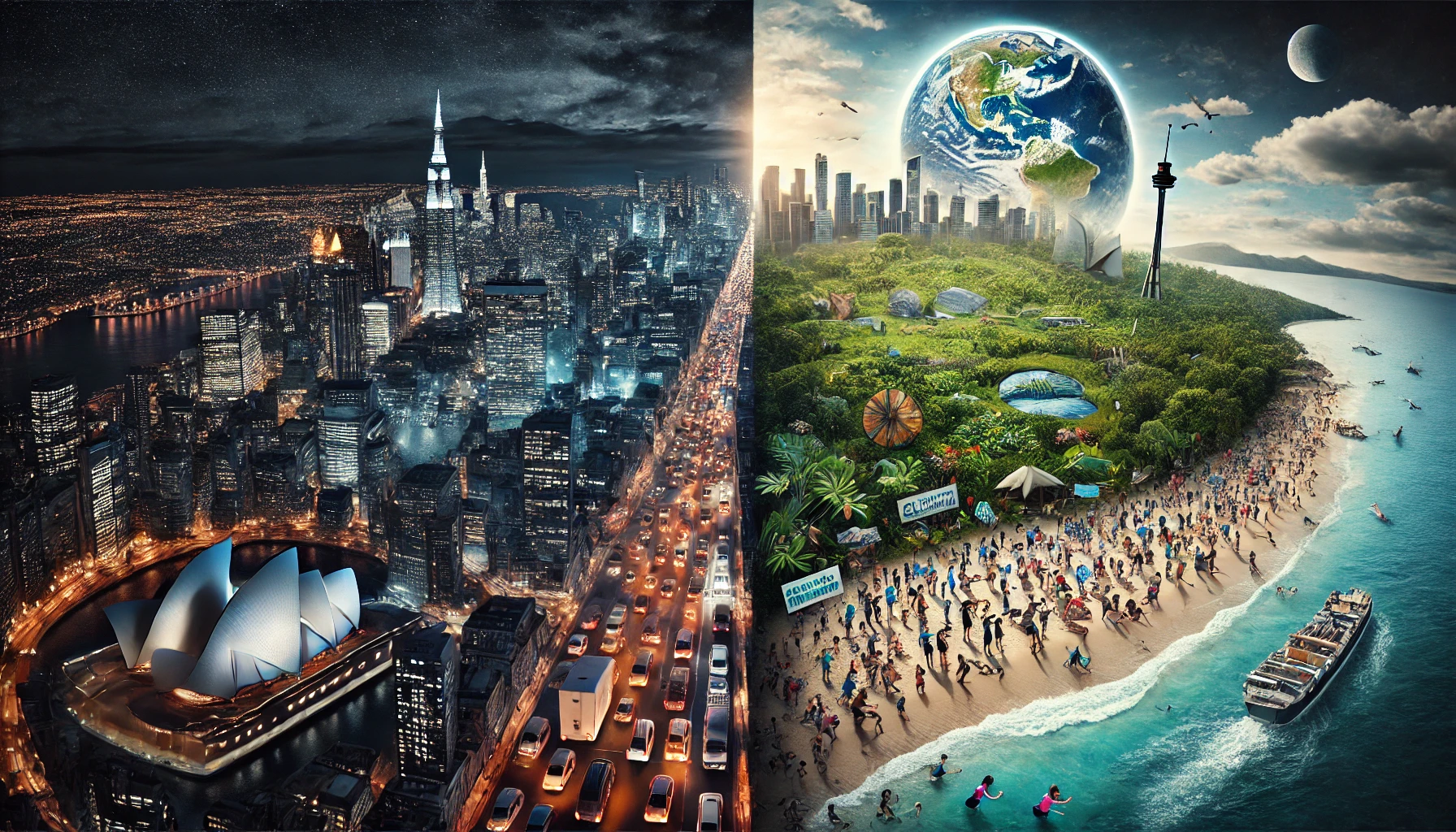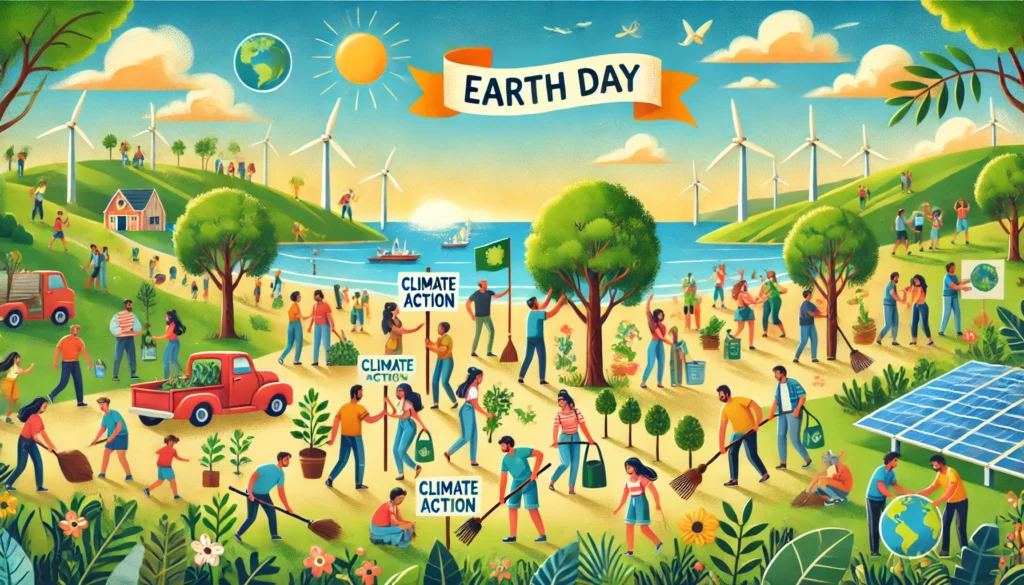Earth Hour vs Earth Day: The Ultimate Showdown – Which One Saves the Planet?

Turning Off Lights vs. Planting Trees – Which Environmental Event Are You Missing?”
Table of Contents
Introduction: A Tale of Two Planet-Saving Giants
Imagine a world where Countless individuals come together in the shadows for one hour, while Countless individuals gather beneath the sun for an entire day. These are not scenes from a an imagined world—they’re Earth Hour and Earth Day, the planet’s most iconic environmental movements. Though some confused, they’re as different as night and day. Let’s talk about their stories, impacts, and why both are important in the fight against climate disaster that are been facing by us.

Earth Hour – The Lights-Out Rebellion
Origins: From Sydney’s Skyline to Global Phenomenon
In 2007, the World Wide Fund for Nature (WWF) launched Earth Hour in Sydney, Australia, as a bold experiment. The goal? To jolt the world awake about energy waste. At 8:30 p.m. local time, 2.2 million Sydneysiders switched off non-essential lights for an hour. The result? A 10.2% drop in energy consumption—equivalent to taking 48,000 cars off the road for a year.
In present time, Earth Hour is observed on the 22nd March 2025 in over 190 countries. Iconic landmarks like the Eiffel Tower, Empire State Building, and Tokyo Tower dive into darkness, symbolizing global fight against climate change.
Purpose: More Than Just Flipping a Switch
- Symbolic Unity: This a collective “stop” to reflect on humanity’s environmental footprint.
- Behavioral Catalyst: It inspires long-term changes like adopting renewable energy or reducing plastic use and carbon footprint.
- Advocacy Amplifier: This pushes governments and private corporations to prioritize sustainability.
Earth Hour 2025 Theme:
“Create the Biggest Hour for Earth” – A call to expand participation and commit to year-round climate action.
Impact: Small Gestures, Big Ripples
- Uganda (2013): Earth Hour campaigns led to a 500-hectare deforestation-free zone.
- Argentina (2012): Public pressure during Earth Hour helped pass a Senate Bill protecting 3.4 million hectares of marine habitat.
- Global Energy Savings: The Philippines saved 195MW of electricity during Earth Hour 2019—enough to power 100,000 homes.

Earth Day – The OG Environmental Revolution
Origins: When 20 Million Americans Stormed the Streets
Earth Day began in 1970, a brainchild of U.S. Senator Gaylord Nelson, who was frighten by oil spills, smog, and toxic rivers. On April 22, 20 million Americans (10% of the U.S. population) protested, demanding action. This “National Teach-In on the Environment” gave the modern environmental movement.
By 1990, Earth Day went global, mobilizing 200 million people in 141 countries. Today, it’s the largest movement worldwide, engaging 1 billion people annually.
Purpose: Education, Policy, and Grassroots Action
- Policy Powerhouse: Earth Day catalyzed landmark laws like the U.S. Clean Air Act and Environmental Protection Agency (EPA).
- Global Education: Schools and NGOs host workshops on recycling, renewable energy, and conservation.
- Corporate Accountability: Calls out greenwashing and pushes businesses to adopt ESG (Environmental, Social, Governance) standards.
Earth Day 2025 Theme
Impact: From Protests to Progress
- 2016 Paris Agreement: Earth Day events bolstered global momentum for the accord.
- The Canopy Project: Planted 100 million trees in 32+ countries since 2010.
- India (2023): Over 10,000 volunteers cleaned 50 tons of plastic from the Ganges River.
Earth Hour vs. Earth Day – The Showdown
| Aspect | Earth Hour | Earth Day |
|---|---|---|
| When? | Last Saturday of March (1 hour) 🌙 | April 22 (Full day) 🌎 |
| Founder | WWF (2007) | Senator Gaylord Nelson (1970) |
| Focus | Energy conservation & climate change | Broad environmental issues (pollution, biodiversity, policy) |
| Key Activity | Lights-off event | Protests, cleanups, tree planting |
| Tone | Reflective, symbolic | Loud, action-driven |
Why We Need Both – The Batman and Superman of Environmentalism
Earth Hour: The Spark
Earth Hour’s strength lies in its simplicity and symbolism. Turning off lights for 60 minutes is easy, making it accessible to everyone—from CEOs to schoolkids. It’s a gateway habit that often leads to deeper engagement.
Case Study: In 2021, Berlin used Earth Hour to launch a city-wide LED streetlight upgrade, cutting energy use by 60%.
Earth Day: The Flame
Earth Day tackles the root causes of environmental decay. Its legacy of policy wins (e.g., the Montreal Protocol phasing out ozone-depleting chemicals) proves that systemic change is possible.
Case Study: Rwanda’s Earth Day 2008 plastic bag ban turned the nation into one of Africa’s cleanest countries.
How to Join the Movement
For Earth Hour 2025 (March 22):
- Host a Candlelit Dinner: Swap electric lights for candles and discuss climate action.
- Stargaze: Light pollution drops by 50% during Earth Hour—perfect for spotting constellations.
- Pledge Long-Term Change: Switch to renewable energy providers or reduce meat consumption.
For Earth Day 2025 (April 22):
- Join a Cleanup: Find local events via EarthDay.org.
- Plant Native Trees: Support biodiversity; one tree absorbs 48 lbs of CO2 yearly.
- Advocate Digitally: Use hashtags like #EarthDay2025 or #InvestInOurPlanet to pressure policymakers.
The Road Ahead – From Awareness to Action
The Climate Clock is Ticking
- The planet has warmed by 1.2°C since pre-industrial times (IPCC).
- Delhi’s Air Pollution: The capital’s PM2.5 levels hit 20x WHO limits in 2023, cutting lifespans by 10 years.
Earth Hour and Earth Day remind us that individual actions (like flipping a switch) and collective demands (like policy reforms) must go side by side.
No Planet B – Why Both Matter
Earth Hour is the alarm clock—brief but vibrating. Earth Day is the blueprint—detailed and enduring. One without the other is like having a car with only a horn or an engine. Together, they drive the world toward sustainability.
Final Call to Action:
Mark Your Calendar: Earth Hour 2025 – March 22, 8:30 p.m. | Earth Day 2025 – April 22.


